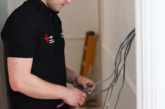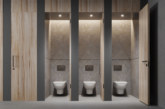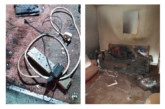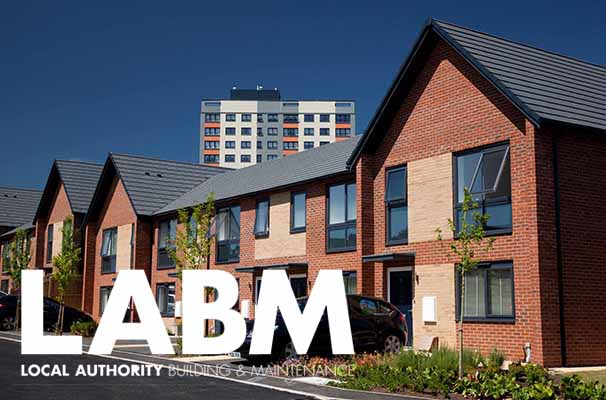
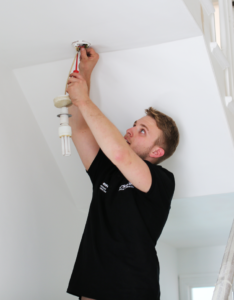 When it comes to providing electrical safety it is important to understand that not one approach fits all. Ian Montague, Consultant Engineer, with leading electrical body NICEIC, explains the danger of overloading circuits with additional electrical equipment and the need to carry out the appropriate safety checks to ensure it is fit for the purpose intended.
When it comes to providing electrical safety it is important to understand that not one approach fits all. Ian Montague, Consultant Engineer, with leading electrical body NICEIC, explains the danger of overloading circuits with additional electrical equipment and the need to carry out the appropriate safety checks to ensure it is fit for the purpose intended.
In 2017/2018 there were 17,809 accidental domestic fires in England of an electrical origin. Sadly, a large proportion of these fires occurred in rented accommodation. The risk of fire from electrical origin is greater in this sector possibly due to the extra wear and tear placed on electrical installations from a high turnover of tenants.
So, when it comes to providing homes which are fit for purpose there is a huge onus on landlords (particularly in the social sector since the Grenfell tragedy) to ensure the electrical installations and appliances are safe to use as intended.
Electrical safety
Social landlords have a responsibility to ensure all residents — or anyone entering a property — are not put at risk, by ensuring that the electrical installation remains in a safe and serviceable condition for continued use. To meet this requirement a landlord will need to regularly carry out basic safety checks to ensure the electrical installation and appliances are safe and working. This means ensuring:
• That the electrical installation in a rented property is safe when tenants move in and maintained in a safe condition throughout its duration.
• That a House in Multiple Occupation (HMO) has an Electrical Installation Condition report (EICR) carried out on the property at least every five years, or at every change of tenancy based upon the findings of the inspection and testing that has been carried out.
Electrical services deteriorate over time, and an increase in load does not help. As with most things in life, electrical installations deteriorate over time. An Electrical Installation Condition Report (EICR) is one recommended way in which these checks can be recorded. In layman’s terms it is comparable to an ‘MOT of the electrics’ in a property and provides an up to date account of an electrical installation. Just like an MOT it will provide a satisfactory or unsatisfactory rating along with recommendations for improvement if required.
An EICR is also advised when a property has had a change of use from its original intention, and now may contain additional electrical equipment which places additional load on the original circuits within a property.
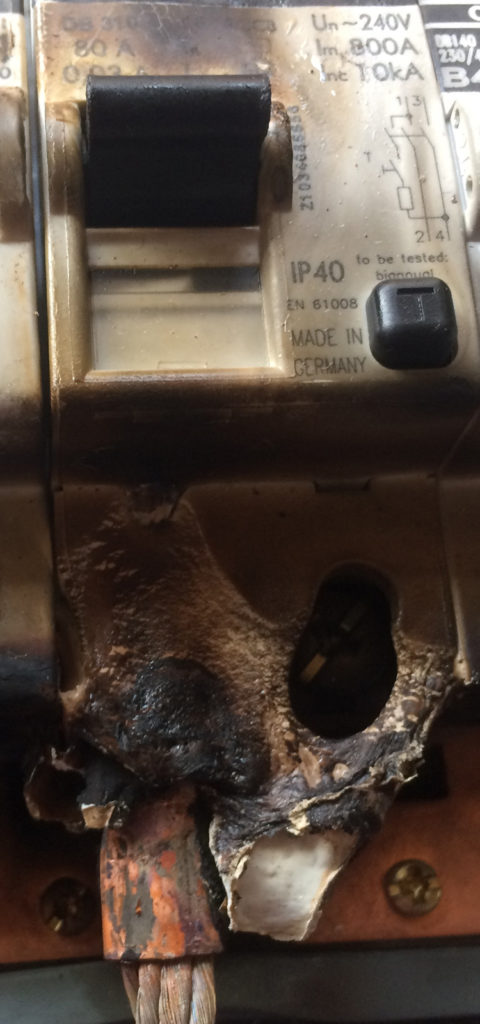
We visit a huge number of properties nationally on behalf of housing associations and local authorities every month. One marked change over the last few years is the increase in the number of homes that have been adapted to suit the particular needs of tenants who might be elderly, disabled or have long term health issues requiring full or part time care.
These homes in some cases have been altered to allow for additional electrical equipment such as hoists, additional heating, or medical devices which can in some cases substantially increase the load on the electrical installation. These increases in load can easily be underestimated and in some cases pass unnoticed by the tenant/the landlord. Tenants are often unaware of the effects of adding the additional electrical equipment until a problem arises.
This is of particular concern when electrical circuits were originally installed 20 or 30 years previously and have not been updated for some time. This is just one of the scenarios which can catch out even the most vigilant landlord and one that we at NICEIC Consulting have identified as a growing problem in recent years.
Our advice for anyone managing properties is to ensure the electrical installation is fit for continued service at the prescribed intervals and to consider any changes of use which may increase the loads placed on circuits.
Technical assistance
NICEIC consulting provides a cost-effective service to help social housing providers avoid technical pitfalls, reduce compliance costs and most importantly, enhance safety. Enabling the landlord to see where they currently stand on a multitude of electrical and gas safety management regulations and code requirements.
For more information about your responsibilities regarding electrical safety visit www.niceic.com/consultancy
Domestic electrical safety advice is also available on the Electrical Safety First website: www.electricalsafetyfirst.org.uk

